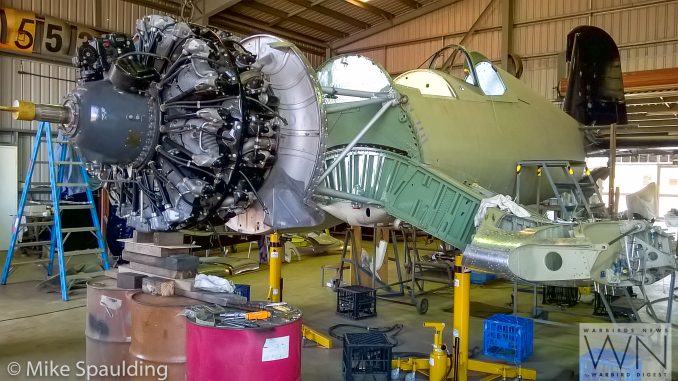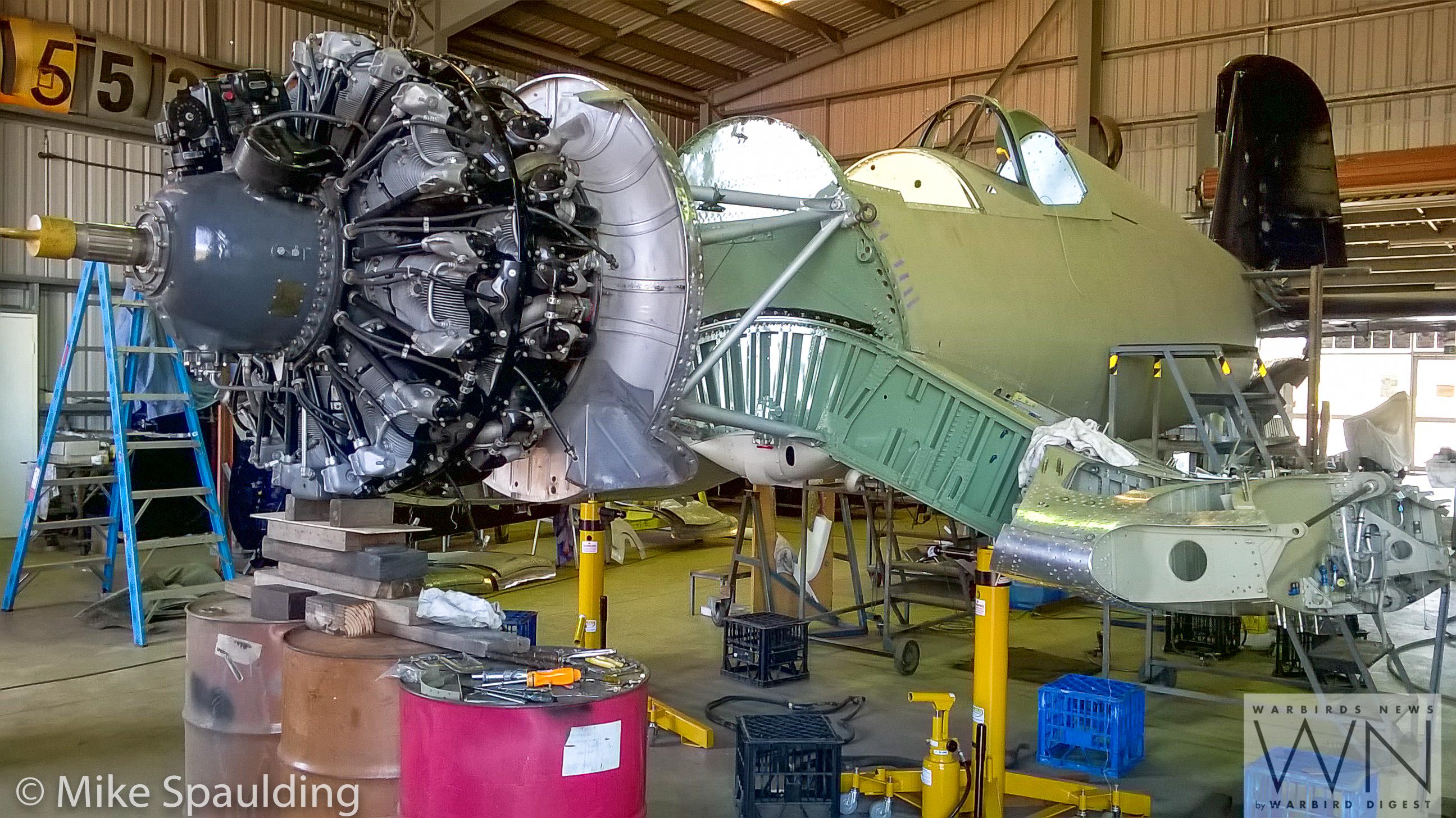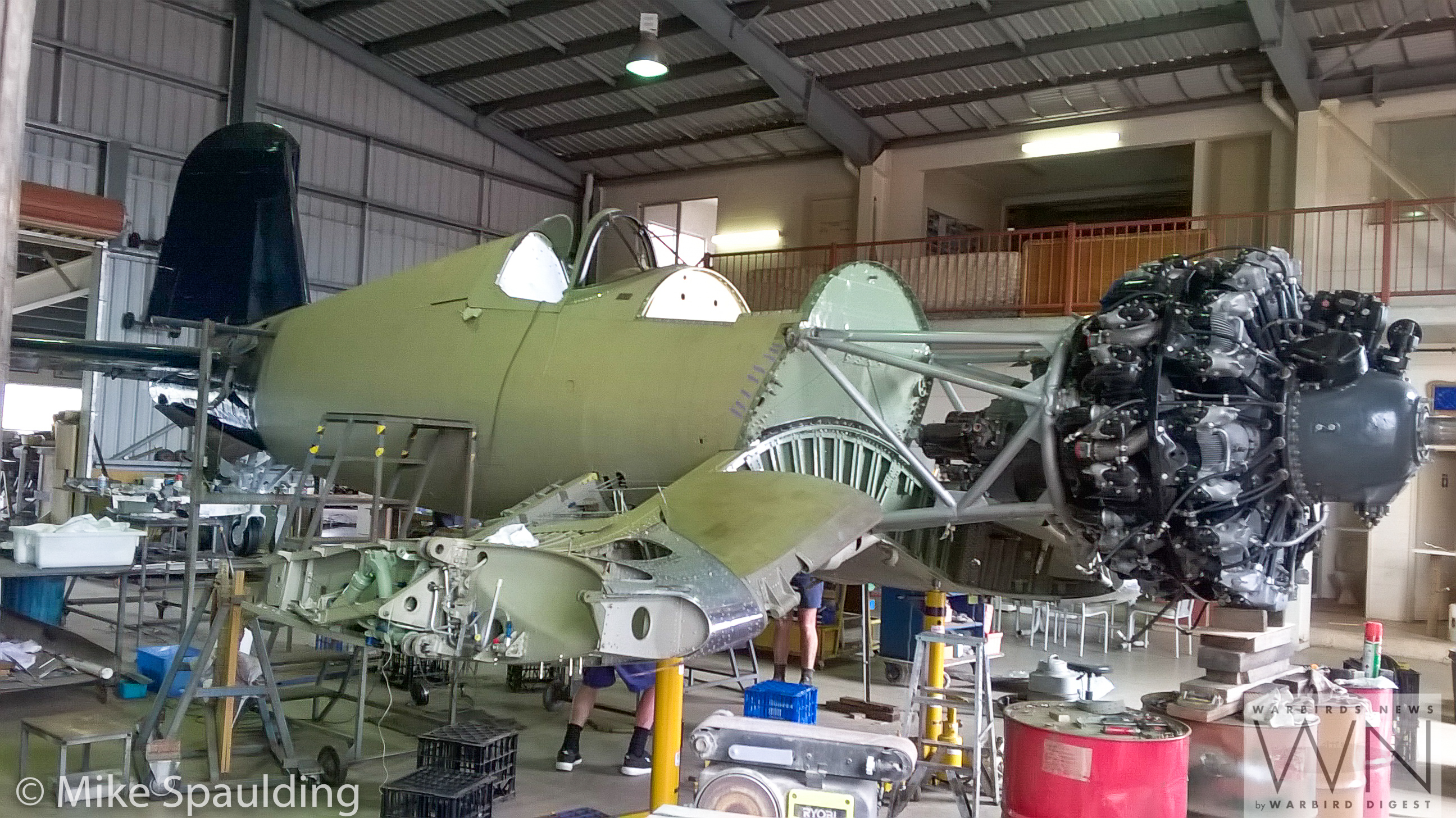

A rare, Vought-built F4U-1D Corsair is now looking much more like her old self again in Mareeba, near the city of Cairns in northern Queensland, Australia. Bu.82640 is one of only two complete F4U-1Ds in preservation right now, the other being Bu.50375 on display at the Smithsonian National Air & Space Museum’s Udvar-Hazy annex in Chantilly, Virginia. Under the watchful eye of her owner, Mike Spaulding, his restoration company, North Queensland Warbirds, has made steady progress on the Corsair since it arrived in March, 2011.
Bu.82640 has an interesting history, and may very well be a WWII combat veteran. She joined the U.S. Navy in December, 1944 and served with VF-10 Grim Reapers aboard the carrier USS Intrepid between January and April, 1945. Given the dates for her time with VF-10 aboard Intrepid, it is very possible that this Corsair took part in the fierce battles against the Japanese over and around Okinawa during that period, as both the ship and her aircraft were heavily involved in that campaign. The U.S. Navy disposed of the fighter not long after WWII, and unlike most WWII-era naval combat aircraft, somehow she made it into civilian hands. The Corsair was on show at the War Memorial Museum of Virginia in Newport News, Virginia by 1949. Unfortunately, the museum sawed her port wing off, close to the fuselage, to display her in their exhibition space’s tight quarters. While we may wince over her dismemberment today, we must remember that these aircraft were plentiful back then. Without sacrificing a wing, the Corsair would likely have been scrapped, like the overwhelming majority of her brethren.
The War Memorial Museum housed the Corsair until 1985, when Steve McLellan acquired her. McLellan kept Bu.82640 stored in the Virginia Beach area for more than a decade, before selling her to Jerry Yagen in 1998. Yagen was still in the early days of building up his world-class, vintage aircraft collection, which evolved into what is now the Military Aviation Museum based in Pungo, Virginia. At that time, he fully intended to restore the Corsair to flying condition, but the lack of a viable, original main spar was a serious problem. Even in the early 2000s, no one had successfully managed the technically challenging, and enormously expensive task of remanufacturing Corsair main spar caps. Yagen eventually opted for the more practical route, and purchased a flyable Corsair in late 1999, FG-1D Bu.92508. He held onto his F4U for a few more years, before trading her to Murray Griffiths in Wangaratta, Australia during 2005. Murray Griffiths had established an incredible restoration shop, seemingly overnight, at his Wangaratta base. He began restoring warbirds on an industrial scale, working simultaneously on multiple examples of a dozen or so warbird types for owners around the world. (Sadly, Griffiths died in September, 2011, before many of his projects reached fruition, although his company, Precision Aerospace is still active under the ownership of Doug Hamilton).



2 Trackbacks / Pingbacks
Graphic Design, Branding and Aviation Art